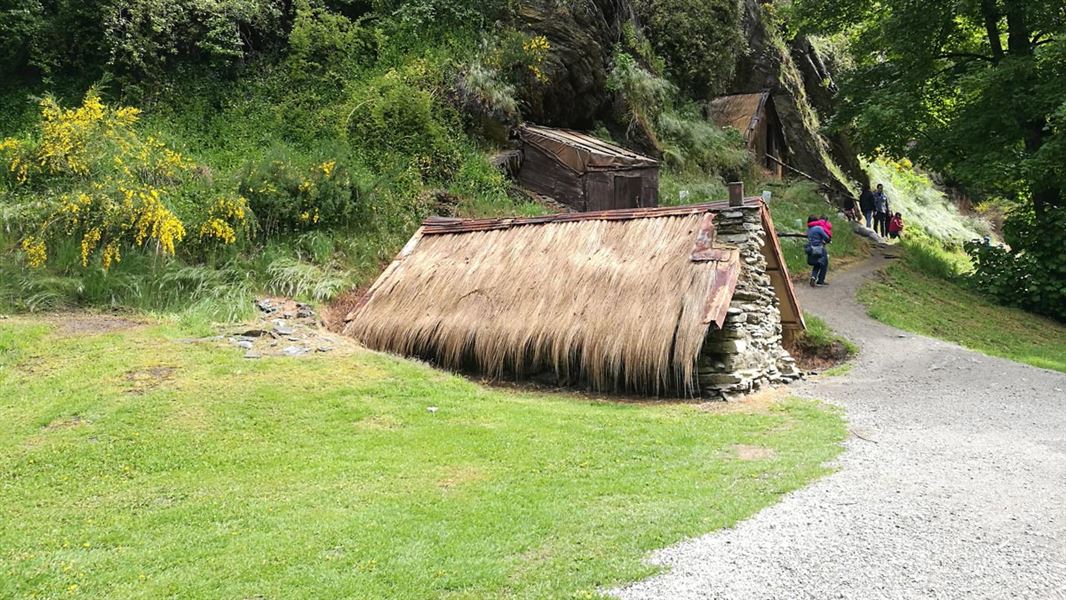Image gallery
This is a Tohu Whenua heritage site. Located in stunning landscapes and rich with stories, these sites offer some of our best heritage experiences.
On the banks of Bush Creek, a tributary of the Arrow River, is the partially restored Arrowtown Chinese Settlement. The settlement is a mute reminder and tribute to the contribution made by Chinese goldminers and business people to the region’s gold mining, cultural and business history.
Many of the huts have been restored, offering visitors the chance to step back into that 'golden' era and see up-close the toil and modest living conditions of the 'other half' in this prosperous town.
Extensive interpretation panels in both English and Chinese tell the story of the Chinese gold miners in the area. You can read about who the miners were and about the challenges and rewards of everyday life in the settlement.
The main walk (old dray track) that runs through the centre of the settlement is suitable for wheelchairs and buggies. It begins at the main track entrance and runs through to the western end.
However side tracks that run off the main walk are not suitable for wheelchairs due to gradient and surface materials.
The Arrowtown Chinese Settlement is near Bush Creek, at the top end of Buckingham Street, Arrowtown’s main street. Buckingham Street swings downhill to a popular picnicking area at the junction of Bush Creek and the Arrow River.
Ah Lum’s restored store is on a terrace to the left, approximately 100 metres down the hill, while the main Chinese settlement is tucked in behind on the flats among willows, poplars and hawthorns.
Chinese immigration
In 1866 fewer than 200 Chinese miners lived in Otago, but Census figures for 1874 show that there were 3564 Chinese in Otago, and most were working on the goldfields. Often victims of harassment and discrimination, they lived on the fringes of European settlements in isolated gullies close to their mining claims. Chinese miners who died were buried in graves just outside the cemetery or in a Chinese section.
By 1885, the Arrowtown settlement had grown to consist of about 10 huts, a large social hall and at least two stores. There was also an extensive garden area. A range of construction techniques was used for the buildings, including mud brick, mortared stone, wood, corrugated iron, and canvas. Some buildings were thatched while others were roofed with corrugated iron.
At first the men lived together in communal huts, usually between two and six men to a house. It seems that the community centred on the large social hall, which was perhaps 15 metres long, until it collapsed or was demolished around 1900.
It is unlikely that any women ever lived in the settlement; the first recorded arrival of a Chinese woman in New Zealand was not until 1873 and by 1896 there were only 11 throughout the country. However about 70 percent of the Chinese miners were married men. Many of the miners were from the Guangzhou delta in China, which was undergoing considerable hardship in the 1800s. Families financed sons and brothers to work overseas believing they could become wealthy and support their families at home.
In the early years, many Chinese gold miners returned home after amassing £100 or so, possibly the equivalent in China to 20 years wages. By the turn of the century, most of those remaining were less successful and were forced through economic circumstances to live out their lives in New Zealand.
The site today
The Chinese settlement at Arrowtown has been partially restored following an archaeological excavation undertaken in December 1983. Following site clearance, the nature and condition of the site was assessed, and a methodical excavation of the physical features completed. Due to subsequent market gardening in the area of Su Sing’s store no firm evidence of this building was found.
The location of the store is now marked with four corner posts. The hut sites have been stabilised and five have been reconstructed to show the style of habitation. Considerable conservation work was completed on the Chinese store last operated by Ah Lum.

This is a Tohu Whenua heritage site. Located in stunning landscapes and rich with stories, these sites offer some of our best heritage experiences.
Whakatipu-wai-Māori/Queenstown Visitor Centre
| Phone: | +64 3 442 7935 |
| Email: | queenstownvc@doc.govt.nz |
| Address: |
50 Stanley Street |
| Hours: | Visitor centre hours and services |
